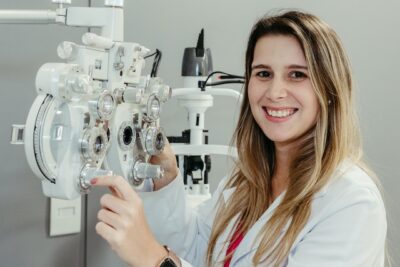Remote patient monitoring has risen to prominence during the pandemic due to its ability to reduce the burden on healthcare facilities. Patients who use remote tracking can receive care without visiting the office, avoiding the risk of infection while still being monitored by their clinician.
Clinicians can also catch out-of-range or alarming values in real-time, allowing them to act before the situation escalates. This can reduce hospital readmissions and emergency room visits, improving patient outcomes.
Improved Patient-Provider Relationships:
When patients feel confident in their ability to monitor their health at home, they are more likely to follow their care plan and keep in touch with their healthcare providers via telehealth. This makes both parties happier, leading to more effective and efficient care.
Using remote patient monitoring allows clinicians to observe a patient’s medical status between in-office appointments, catching out-of-range or alarming data and alerting them immediately. This can help reduce the risk of hospital readmissions and readmissions.
It can also decrease the burden on overcrowded hospital systems and allow physicians to focus on preventive care. This can make a big difference in the overall quality of U.S. healthcare and ensure that patients get the most out of their treatment plans.
Better Management of Chronic Conditions:
Chronic conditions like diabetes, cardiovascular disease, and obstructive pulmonary disease are easier to manage for patients when their physicians can see the data they’re sending from their home devices. This leads to improved patient outcomes and reduced costs.
RPM also makes it possible to monitor symptoms before they escalate into emergencies. This prevents unnecessary hospital readmissions and helps healthcare providers avoid Affordable Care Act (ACA) penalties.
In addition, to reducing the extra unnecessary costs for healthcare providers and patients, remote healthcare monitoring can even boost physician revenue streams. This is because telehealth services that enable patients to send digital data directly to their physicians are reimbursed under Medicare CPT codes. This means that patients can receive a full range of telehealth services without the high copays and out-of-pocket expenses associated with in-person office visits.
Reduced Hospital Readmissions:
Hospital readmissions are a costly problem for hospitals and patients alike. They strain facility operations, negatively affect patient outcomes and satisfaction scores, and eat up valuable bed space that could be filled with new admissions.
But many patients can avoid readmissions by monitoring their health closely and proactively. Patients with remote monitoring tools can collect vital signs daily and alert their clinicians of significant changes.
This helps doctors see how a patient’s symptoms fluctuate, giving them the insights to intervene early to prevent escalation. It also allows doctors to focus on delivering proactive care, which aligns with value-based medicine goals. As a result, healthcare facilities can improve their quality of care while reducing the costs associated with unnecessary and preventable hospital readmissions.
Reduced Emergency Room Visits:
Many patients with chronic conditions require regular monitoring, which is difficult in a traditional clinical setting. Remote patient monitoring allows them to skip inconvenient and expensive trips to the hospital and receive care at home. This is a major convenience benefit that also improves patient satisfaction.
For example, a COPD patient could monitor their oxygen saturation (SpO2) at home to help avoid exacerbations. This enables doctors to intervene early in the symptom flare-up, which can prevent health complications and avoid hospital admission.
Additionally, telemonitoring can help prevent infectious disease transmission by eliminating the need for in-person clinical visits. This is important for vulnerable populations, such as the elderly or immunocompromised, at risk for infection. It also improves contact tracing and facilitates vaccinations.
More Efficient Workflow:
Remote monitoring allows physicians to collect critical data outside clinic visits, ensuring patients always receive the most current and accurate information. Additionally, it provides patients with a more active role in their care and increases patient satisfaction.
Moreover, cms remote patient monitoring can connect patients with specialized doctors they wouldn’t otherwise have access to, such as cardiologists and pulmonologists. This helps ensure a more thorough and individualized treatment plan.
Decreasing office visits also expands clinicians’ capacity to take on more patients and enables them to provide quality care consistently. Plus, it can help avoid unnecessary infectious exposure for immunocompromised patients. This was an important consideration during the COVID-19 pandemic. One hospital’s RPM program minimized excessive hospital readmissions and improved patient outcomes.










